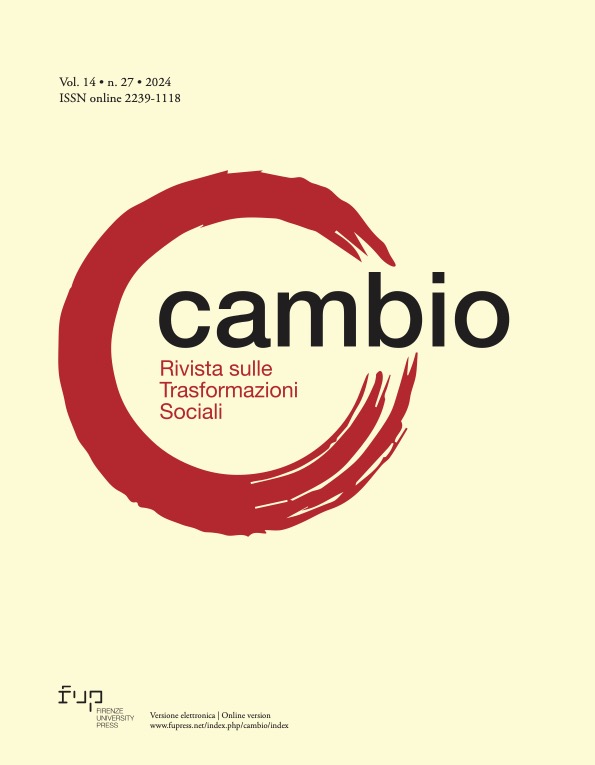Digitalizzare la pubblica amministrazione: Il caso Spid tra pratiche digitali e nuove diseguaglianze
Published 2024-12-09
Keywords
- Digitalization,
- Public Administration,
- Digital Identity,
- Digital Divide,
- SPID
How to Cite
Copyright (c) 2024 Fabio Maria Esposito

This work is licensed under a Creative Commons Attribution 4.0 International License.
Abstract
Digital transformation is increasingly affecting the organisation of public administration (PA) and the delivery of public services. The digitalisation of the public sector is often presented as an unambiguous, desirable and/or even inevitable process, also linked to discourses concerning organisational efficiency and effectiveness. On the other hand, PA digitalization is only rarely analysed in situated terms, by looking – for instance – at actual emerging practices, technologies-in-use, or organizational reassemblages. Among the aspects mosty affected by PA digitalization we can find processes of interaction between public institutions and citizenship, which are now widely and increasingly intermediated through apps, websites and platforms. Here, one of the main needs concerns the creation of authenticated forms of digital identity, defined by the European Commission as ‘key enablers’ of digitisation. This article proposes an analysis of the main tool dedicated authenticated digital identification in Italy: the Public Digital Identity Service (Spid). By drawing on qualitative empirical data of different kinds regarding the setup of Spid and the micro-relational user practices related to it, we will attempt to highlight how Spid elicits potential forms of exclusion that stem from how the system is configured. To do so, we will look at how Spid rearticulates the relationship between institutions and beneficiaries in practice and at the ways this relates to possible forms of exclusion and marginalisation in the use of public, social and healthcare services thus inducing new forms of digital inequality.

